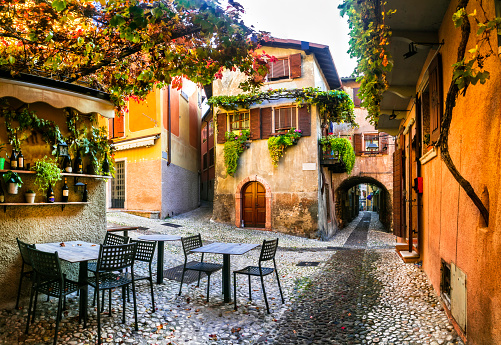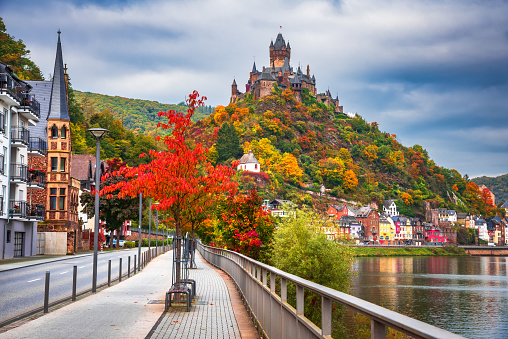Top historic countries in the world you must know
Travel and history go together naturally, especially some historic countries. Travel links the past to the present and enables us to appreciate its significance both now and in the future, whereas history aids in our understanding of the past in general. Consequently, engaging with history with respect to historic countries is one of the few things that might be more enjoyable for travellers. Likewise, travelling is one of the best things you can do if you love history. Historic countries are attention worthy.
Since we’re all confined at home right now, this is a wonderful time to learn about the past in order to get ready for the trips we’ll take when travel resumes. As a result, we’ve listed some of the top places for history fans to travel, which should make it easier for us to decide how to spend our time now.
Italy: historic countries

IMAGE CREDITS: istockphoto.com
Italy has a lot to offer, whether you are interested in the ancient world, the mediaeval era, or the inventions of the Renaissance. Start in Rome, which served as the capital of the ancient Roman Empire and is the ideal location to learn about the development of the culture that dominated most of the western world.
The Forum, Palatine Hill, the Colosseum, and the Pantheon all provide a window into this world from 2,000 years ago. the Medici Family, who governed throughout the early stages of the Renaissance, by travelling to Florence. The Uffizi Gallery and the dell ‘Accademia are two world-class museums where you may follow their influence on art and culture.
At Venice, historical sites like St. Mark’s Basilica and the trading empire that dominated most of the Aegean and the larger Mediterranean can be explored. No matter whatever location you concentrate on in Italy, you will encounter historical landmarks and discover how the country has influenced the world. It is a land rich in historical wealth.
Jordan: historic countries
Jordan contains many ancient sites that date back several thousand years, just like many other Middle Eastern countries. But unlike some of its neighbors, Jordan is also extremely safe, making it a great Middle Eastern destination for history enthusiasts. The Citadel, which overlooks the city from a slope in the capital Amman and was once occupied by the Assyrians, Babylonians, and Romans, is visible. You can also discover more about how this country came to be after the collapse of the British and Ottoman Empires. Perhaps, the most impressive historical site in the nation is the ancient city of Petra, located in the south.
Greece
IMAGE CREDITS: istockphoto.com
Greece should be quite high on the travel wish lists of most history fans because it was the cradle of democracy and the ancient Hellenic empires. Start in Athens where you may get a taste of the heights of Hellenic culture by visiting the renowned Acropolis ruins. Arrange a trip to the Greek Islands to view archaeological sites and discover how history and myth interact on these sun-bleached, rocky islands after you’ve seen the Parthenon and these other well-known ruins. For instance, in Delos, you can learn about mysterious cults and visit ancient monuments that are comparable to Olympia and Delphi, or you can visit Rhodes and tour the mediaeval old town and discover the Colossus that once spanned the harbor.
Egypt: historic countries
Egypt is a place of immense historical significance, as should be obvious. Let me stress, though, that Egypt was the site of one of the world’s oldest civilizations, which left behind incredibly spectacular monuments like the pyramids. You may explore the old world in Cairo by taking tours of the Giza pyramids, which include the Great Pyramid of Khufu, the only surviving example of the Ancient Seven Wonders of the World. Other historical sites, including the ancient city of Memphis and the Valley of the Kings and Valley of the Queens outside of Luxor, which is home to the tomb of King Tutankhamun among many other pharaohs, will be revealed to you on a subsequent voyage down the Nile River.
Peru: historic countries
IMAGE CREDITS: istockphoto.com
Any list of the top historical sites in the world would have Machu Picchu, the Lost Citadel of the Incas, towards the top. Peru is a must-visit place for history enthusiasts just for that reason. Machu Picchu is a beautiful hilltop citadel in the Sacred Valley of the Incas, but there is more to this nation’s history than that. The entire Sacred Valley should enthrall both ardent history lovers and ordinary tourists, from the cliffside castle of Ollantaytambo to the ruins of Pisac to the agricultural terraces of Moray and the salt pans of Maras.
England: historic countries
For those who enjoy history and are interested in western civilization, England is a natural fit. London is a historical wonderland and a fantastic starting point because it was once the center of the British Empire and the capital of England. With so many historical objects on exhibit (some of them, let’s say, “stolen” from other locations throughout the world), the British Museum alone is somewhat of a historical paradise in its own right. You may get a better idea of how prominent London is when you include British sites like Windsor Castle, Buckingham Palace, the Tower of London, and Westminster Abbey, among others.
Cambodia
The splendour of Angkor Wat, the former capital of the Khmer Empire during the 12th century and one of the most amazing collections of temples in the world, justifies Cambodia’s position on this list, as does Peru. Angkor Wat, a collection of Buddhist and Hindu temples from the ninth to the fifteenth centuries, is situated in the northwest of the nation, just outside the city of Siem Reap. The northern temple Ta Prohm demonstrates how the natural world has gradually engulfed much of the empire over the years while some of the temples, such as Angkor Wat and Angkor Thom, are enormous exhibitions of the kingdom’s grandeur.
Germany: historic countries
IMAGE CREDITS: istockphoto.com
Germany encourages history enthusiasts, whether they are interested in mediaeval or modern history, like so many other countries in Europe. The Brandenburg Gate, which was once the emblem of Prussia’s imperial might but now stands as a symbol of German reunification, is located in Berlin. At the remnants of the Berlin Wall and Checkpoint Charlie, where a select few were able to cross the border between East and West Berlin, you may learn more about the Cold War. Nuremberg, a city outside of Berlin, provides sobering insight into the history of the Nazi Party and the trials of party leaders in the years following World War Two.
